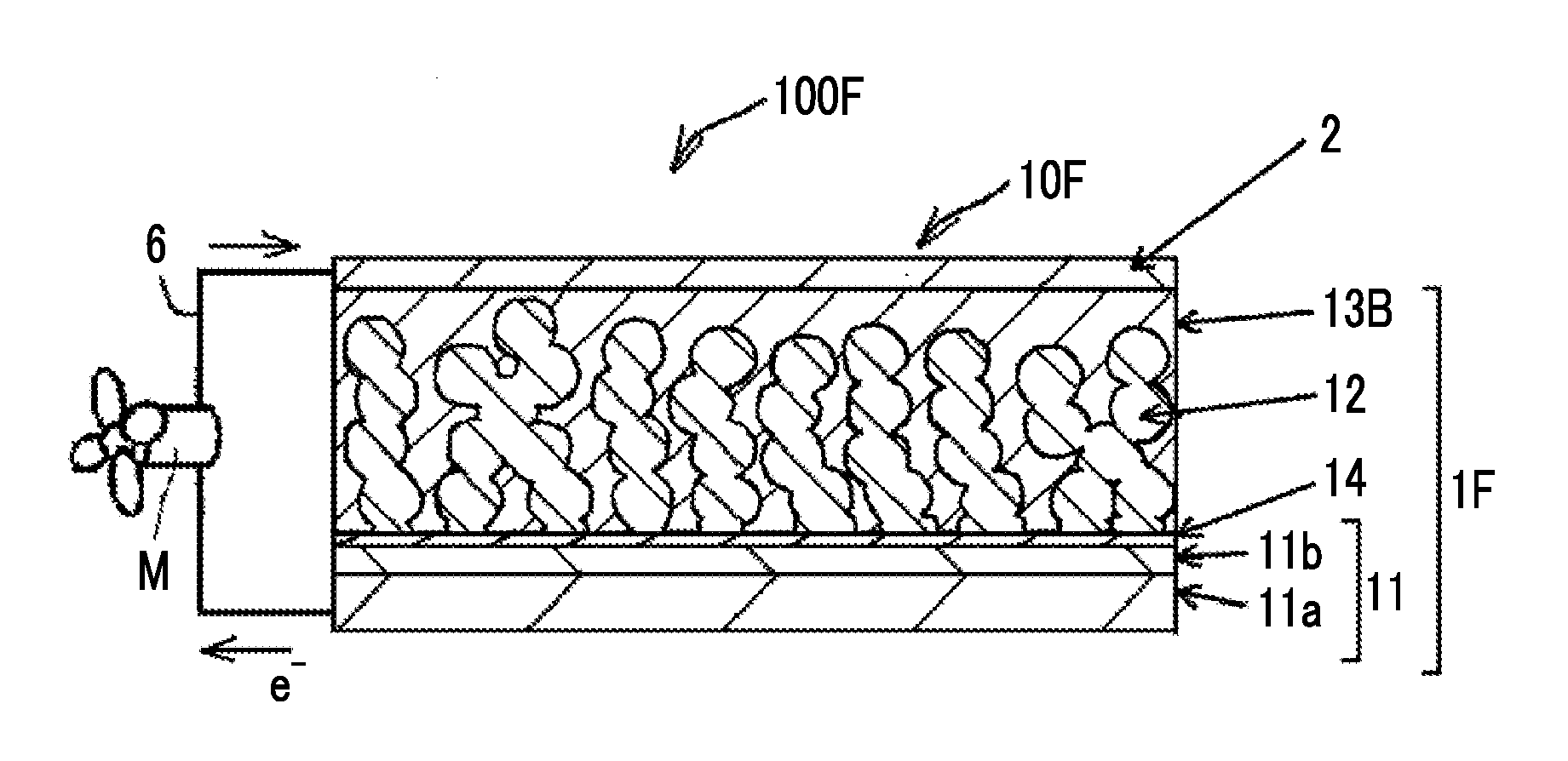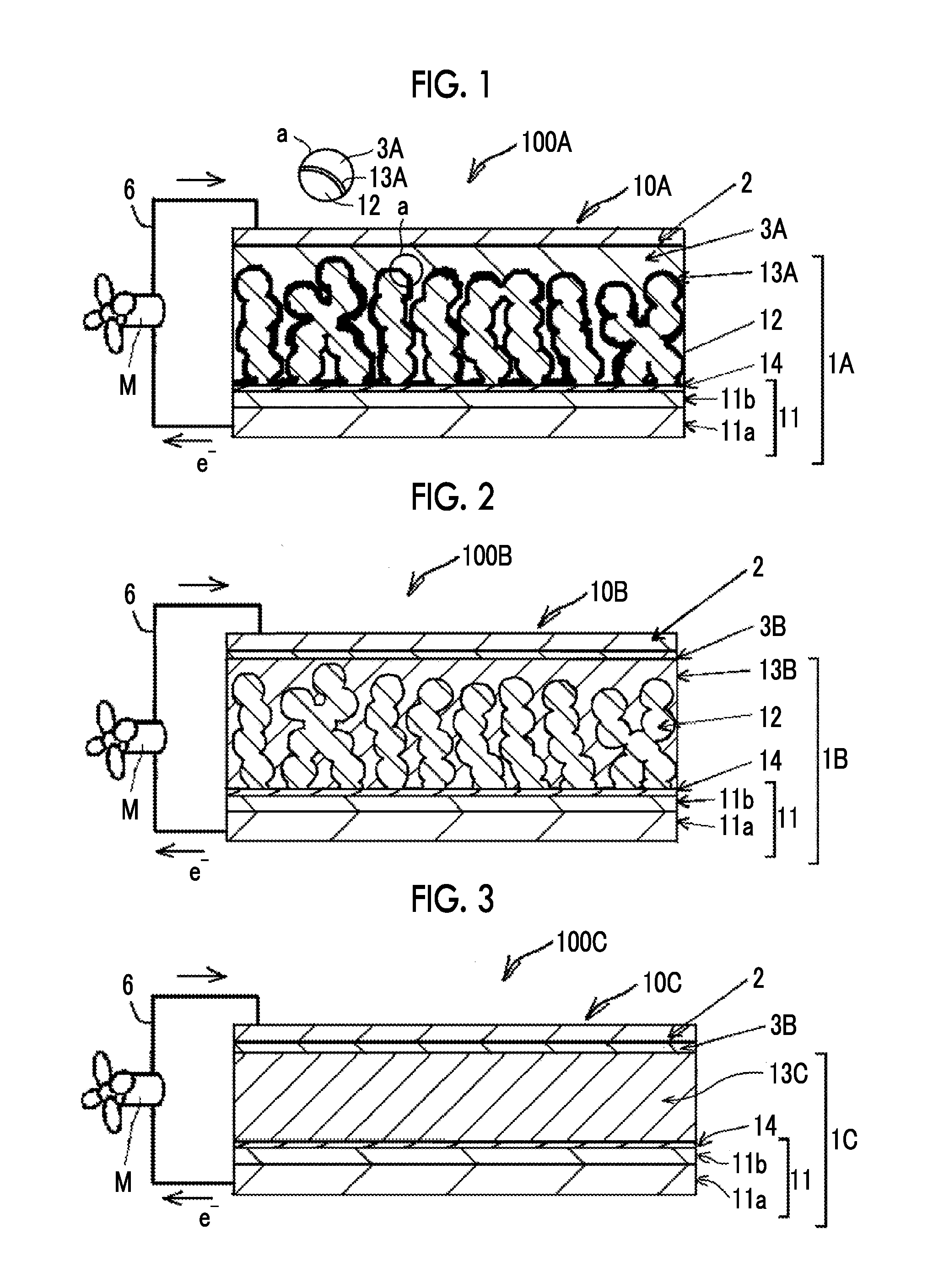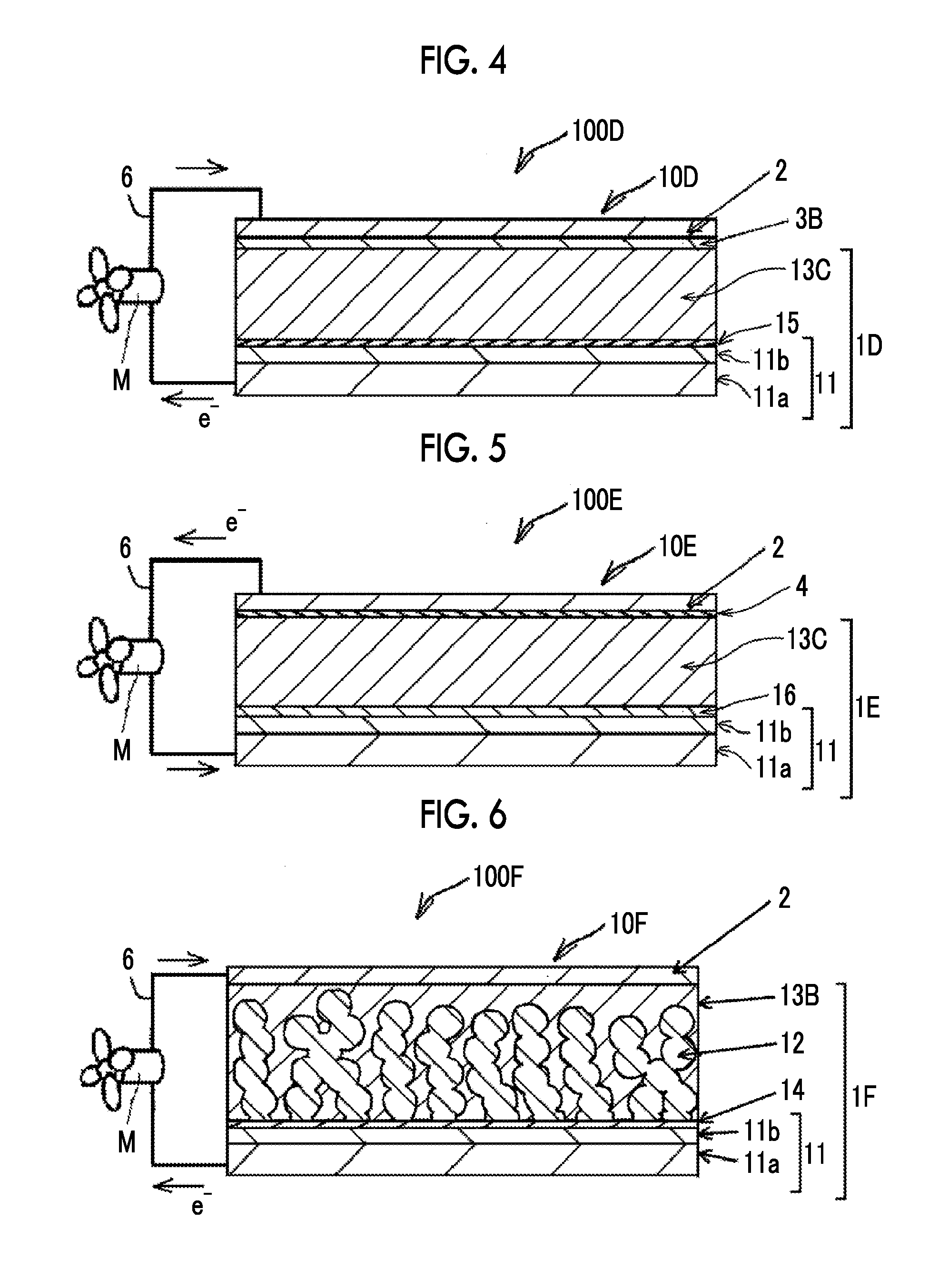Photoelectric conversion element, solar cell using the same, and method for manufacturing photoelectric conversion element
a technology of photoelectric conversion element and solar cell, which is applied in the direction of final product manufacturing, sustainable manufacturing/processing, electrolytic capacitors, etc., can solve the problems of insufficient amount of research and studies regarding cell performance, insufficient cell performance stability, and significant fluctuation of cell performance degradation in high-temperature and humidity environment, so as to reduce the fluctuation range of cell performance degradation and stable cell performance
- Summary
- Abstract
- Description
- Claims
- Application Information
AI Technical Summary
Benefits of technology
Problems solved by technology
Method used
Image
Examples
example 1
Manufacturing of Photoelectric Conversion Element and Solar Cell (Specimen No. 101)
[0289]The photoelectric conversion element 10A and the solar cell illustrated in FIG. 1 were manufactured in an order described below. In a case in which the film thickness of the photosensitive layer 13 is thick, the photoelectric conversion element and the solar cell correspond to the photoelectric conversion element 10B and the solar cell illustrated in FIG. 2.
[0290]An isopropanol solution containing 15% by mass of titanium diisopropoxide bis(acetylacetonate) (manufactured by Sigma-Aldrich Japan K.K.) was diluted with 1-ethanol, thereby preparing 0.02 M of a solution for a blocking layer.
[0291]A conductive support 11 obtained by forming a fluorine-doped SnO2 conductive film (a transparent electrode 11b, a film thickness of 300 nm) on a glass support 11a (having a thickness of 2 mm) was prepared.
[0292]A blocking layer 14 (having a film thickness of 50 nm) was formed on the SnO2 conductive film using...
example 2
[0353]In the present example, the photoelectric conversion element 10C illustrated in FIG. 3 was manufactured, and the characteristics were evaluated.
[0354]Photoelectric conversion elements and solar cells (Specimen Nos. c201 to c204, 215, and 216) were respectively manufactured in the same manner as the photoelectric conversion elements and the solar cells (Specimen Nos. c101 to c104, 115, and 116) of Example 1 except for the fact that, in the manufacturing of the photoelectric conversion elements and the solar cells of Example 1, the porous layer 12 was not provided.
[0355]The variations in the moisture-heat resistance of the manufactured solar cells were evaluated in the same manner as in Example 1, and consequently, it was found that the solar cells of Specimen Nos. 215 and 216 all allowed variation in the moisture-heat resistance only to a small extent and exhibited stable cell performance. On the other hand, the solar cells of Specimen Nos. c201 to c204 were all in capable of s...
example 3
[0356]In the present example, photoelectric conversion elements not provided with the hole transportation layer (refer to the photoelectric conversion element 10F illustrated in FIG. 6) and solar cells were manufactured, and the characteristics were evaluated.
[0357]Photoelectric conversion elements and solar cells (Specimen Nos. c301 to c304, 315, and 316) were respectively manufactured in the same manner as the photoelectric conversion elements and the solar cells (Specimen Nos. c101 to c104, 115, and 116) of Example 1 except for the fact that, in the manufacturing of the photoelectric conversion elements and the solar cells of Example 1, the hole transportation layer 3A was not provided.
[0358]The variations in the photoelectric conversion efficiency of the manufactured solar cells were evaluated in the same manner as in Example 1, and consequently, it was found that the solar cells of Specimen Nos. 315 and 316 all allowed variation in the moisture-heat resistance only to a small e...
PUM
 Login to View More
Login to View More Abstract
Description
Claims
Application Information
 Login to View More
Login to View More - R&D
- Intellectual Property
- Life Sciences
- Materials
- Tech Scout
- Unparalleled Data Quality
- Higher Quality Content
- 60% Fewer Hallucinations
Browse by: Latest US Patents, China's latest patents, Technical Efficacy Thesaurus, Application Domain, Technology Topic, Popular Technical Reports.
© 2025 PatSnap. All rights reserved.Legal|Privacy policy|Modern Slavery Act Transparency Statement|Sitemap|About US| Contact US: help@patsnap.com



